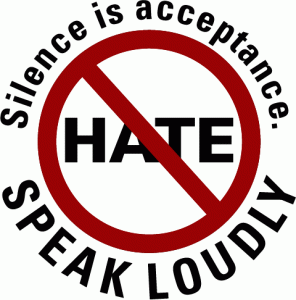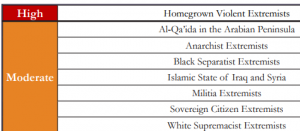 updated July 19, 2017
updated July 19, 2017
We’ve reached a point in our national discourse when it has become clear that even small organizations and business owners may need to establish clear anti-hate policies for employees, customers and visitors.
While there are no standardized procedures for this process, this blog post suggests a few points to get started.
Action steps
1) Establish the reason for the policy. Make it clear that policy action is taken as your prerogative as the business owner and that this has nothing to do with civil rights, freedom of expression, or discrimination against legally protected groups. Emphasize that the consequences of personal expression remain with the individual.
2) Don’t blame. Recognize that this is an evolving topic and that symbols that were deemed acceptable in the past may not be acceptable in the future. Standards are changing rapidly. That’s not your fault, or the fault of your employees, customers of visitors. Nobody could have reasonably predicted this level of rise of hate speech and its tolerance at the highest level of government.
3) Name hate groups not tolerated. This may include the symbols of specific terrorist groups known to state or local government, Nazi, confederate symbols, Trump logos and slogans including “MAGA”. Include a reference in your policy that the list is not exhaustive. Naming some of the unacceptable hate group symbols in your statement is the most effective step a small business can do to communicate its tolerance policy.
The State of New Jersey issued a 2017 terror assessment report earlier this year that named these top risks:

3) Don’t violate anti-discrimination laws. Federal and state laws protect certain groups from discrimination. You policy should not discriminate against these protected groups. Federal law protects us from discrimination or harassment based on sex, race, age, disability, color, creed, national origin or religion. Some state and local laws protect additional groups against harassment and discrimination. Know the law in your location.
4) Keep the guidance simple. Fewer words are better. A clear simply worded policy is more likely to be effective.
5) Establish fair and decisive consequences. Your policy does not need to include complex or burdensome enforcement. A small business will simply say “Violators may not be invited to future events…” or “…will not be invited to renew…” or something similar.
6) Post the policy prominently. Obviously effective communication is the key to success. Normal distribution of this type of new operating policy includes distribution in employee areas, web sites and customer contracts.
7) For additional ideas on incorporating this policy into a broad life action plan, see the Southern Poverty Law Center’s newly published a guide “10 Ways to Fight Hate“. We will likely find support and ideas from this community-based approach.
Sample policy statement
This is a sample of the policy that will be adapted into the management policies and the customer agreement of my own business:
Prohibited Actions – “Display or use of statements, slogans or logos deemed by management to be false or intimidating is not allowed. Prohibitions include verbal or written statements, slogans, logos, symbols, clothing, flags, etc. that display messages of hate, propaganda, conspiracy or terror groups as identified by the State of New Jersey, the New Jersey State Police or the Southern Policy Law Center as well as those of political parties, the Trump organization, the alt-left and alt-right movements or conspiracy theories that support division or intimidation. Management, at its sole discretion, may rely on prevailing legal standards to elect to either ban or ignore specific examples that come into question under this policy based on individual facts and circumstances. Violators may be asked to remove offending items or to refrain from using offending speech. Multiple infractions may result in exclusion from future participation in our community and organization.
Additional considerations
After the initial publication of this article, two points surfaced that should be considered in the implementation of the strategy:
Trump-branded marks – Some marks or slogans are widely regarded as unacceptable in public places and are often regulated by management. Prohibiting clothing with gang colors or symbols. terror groups, nazis, etc. have plenty of precedent. The State of New Jersey ad the SPLC puts out a list off hate groups and the New Jersey State Police have offered additional guidance to business owners on a local basis. The untested but interesting thing now is whether Trump-related imagery will become similarly regulated. It is clear to me in my community that the few who display this imagery do not intend to intimidate or force division. Yet others may perceive this attire or banners as intimidating. There have been few recent test cases on this subject. In at least one high profile case a school that banned Trump imagery backed down from its position after a complaint. Private businesses have upheld the ban despite challenge. In the current volatile situation we don’t yet have reliable guidance.
Exposure to litigation – Some forms of discrimination are prohibited by law. Other forms of discrimination are not protected by law. This ‘no hate’ policy discussion proposes targeting only individuals, marks and slogans that are not protected by law. However, this strategy does not protect the business from a lawsuit. It is important to realize that hate groups do have an active history of litigation. It makes sense for a small business to consider in advance its litigation response strategy.
We recognize that this is a new and evolving topic in small business management that may generate with potentially controversial reaction. I welcome constructive comments and feedback. A free copy of my business’ anti-hate policy is available on request.

Leave a Reply